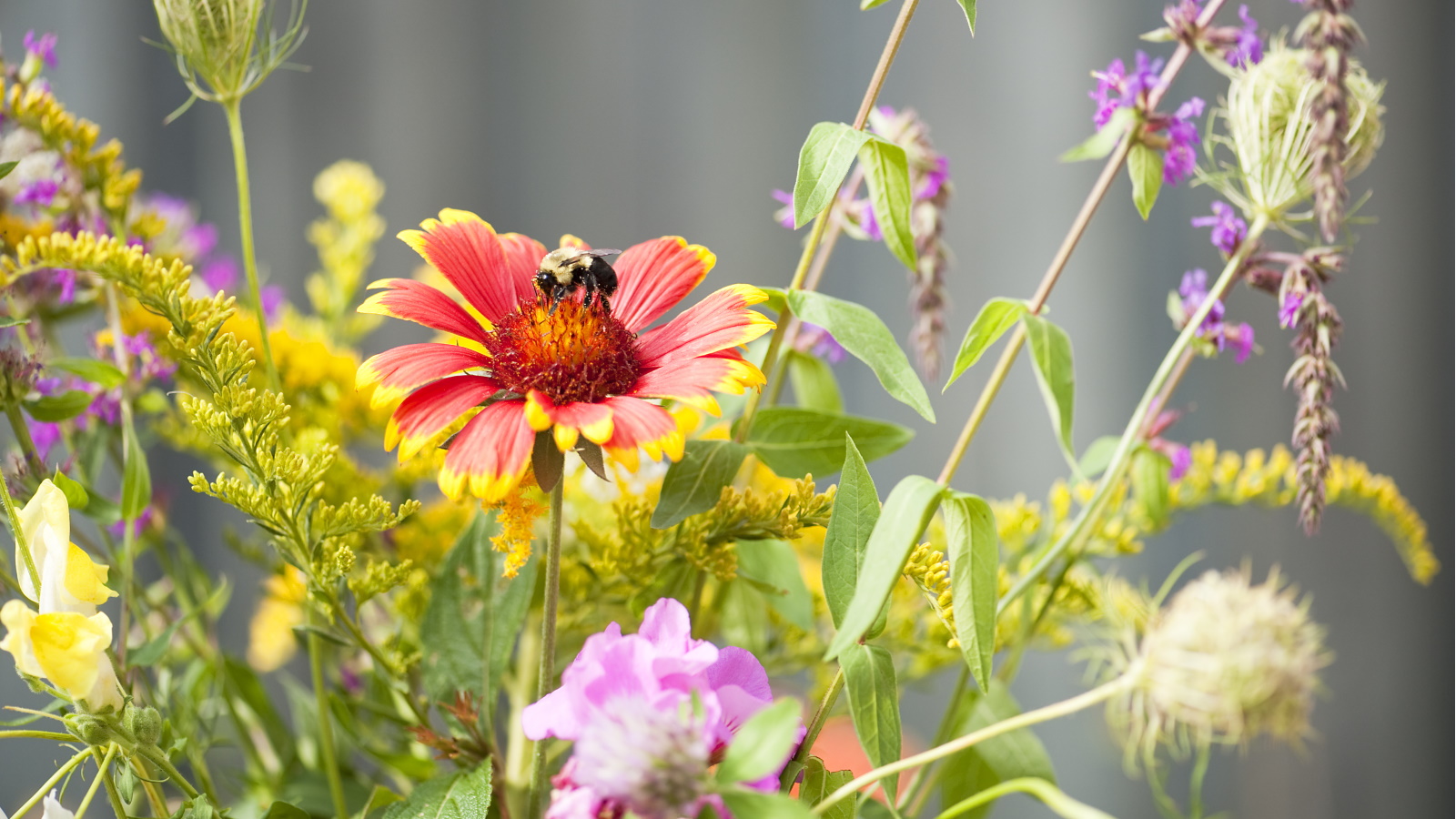
Pollinators – bees, butterflies and wasps to name just a few – play a vital role in our gardens and the wider ecosystem, pollinating plants for further growth.
If you want to create a wildlife garden or a garden for pollinators, you might feel overwhelmed by the many plants for pollinators to choose from, and you may feel particularly stuck if you lack a lot of outdoor space. But don't fret, there are plenty of plants that can work well for container gardening and are perfect for pollinators.
We've compiled an expert list of the best container plants for pollinators so that you can create beautiful pot arrangements that will help the visiting critters in your yard.
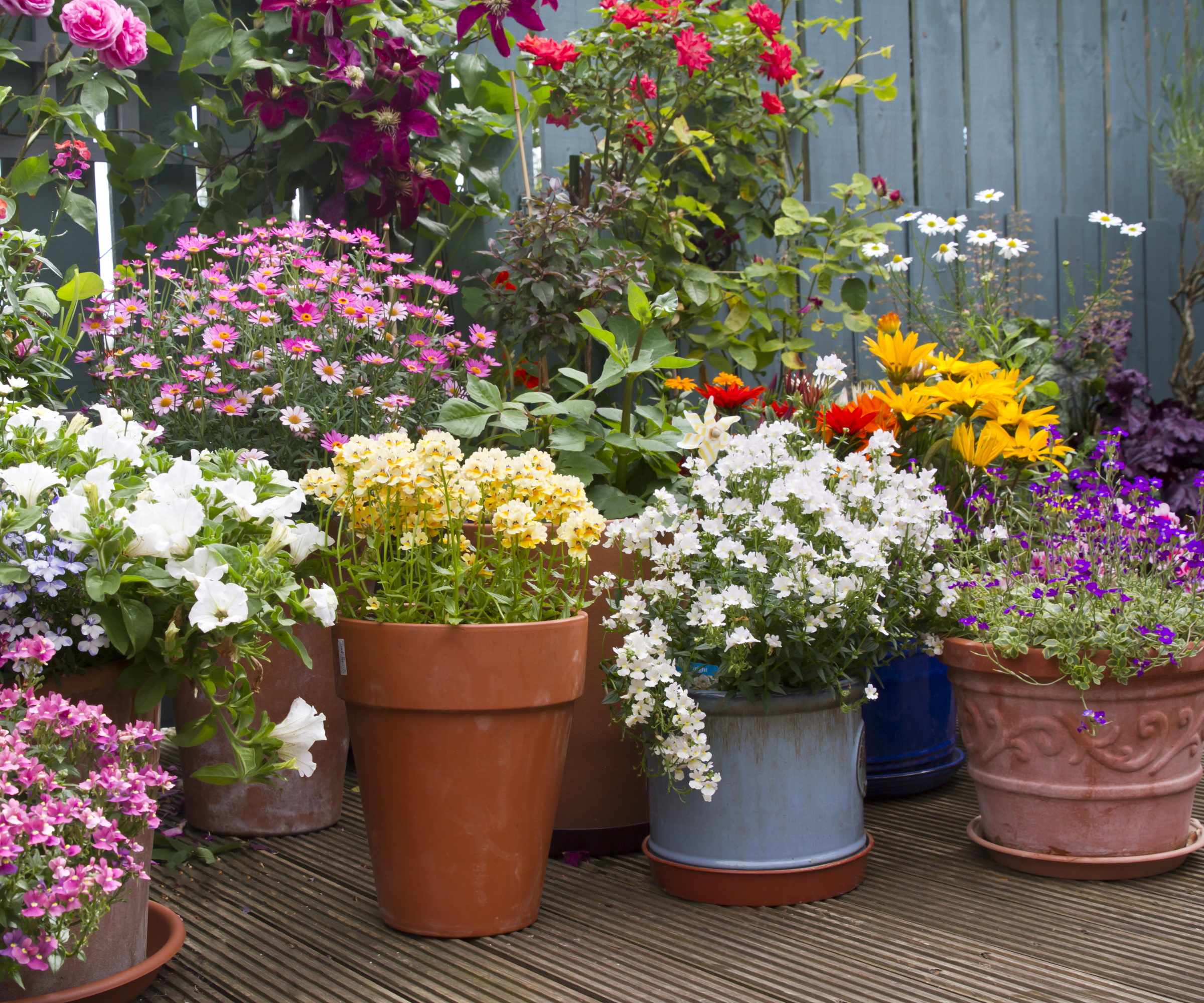
Best container plants for pollinators
There are so many wonderful plants you can grow in pots to lend a helping hand to pollinators. We've compiled an expert list of the best container plants for pollinators that will look beautiful in your yard, on a patio or balcony; providing plenty of nectar for bees, butterflies and more.
1. Lavender
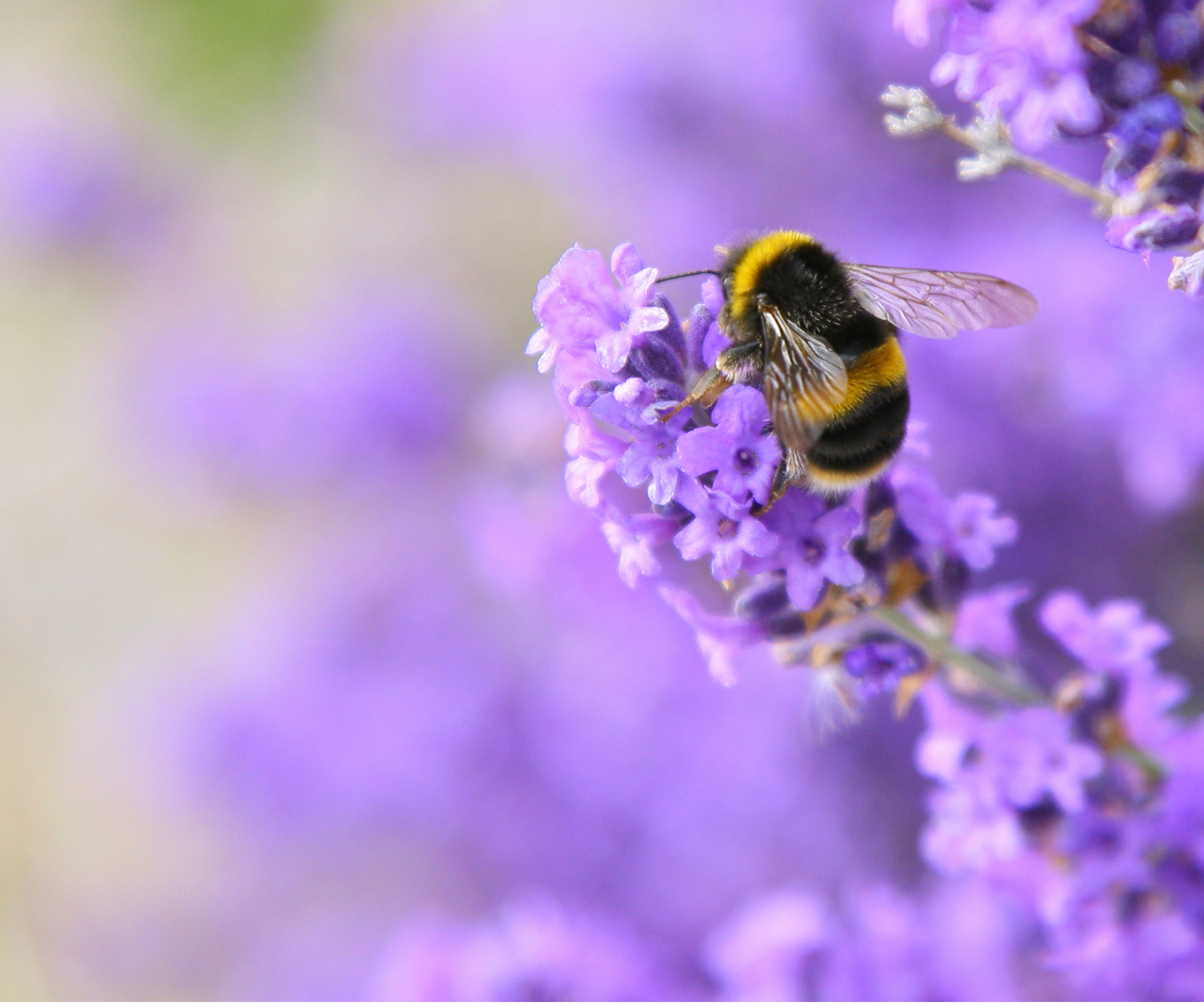
Lavender is one of the first plants that comes to mind when thinking of providing for pollinators. It's a common sight to see bumble bees buzzing around these fragrant flowers during spring and summer.
'Lavender produces a high amount of linalool – the chemical that makes flowers have a pleasant smell – which is what attracts bees,' says Donna Letier, the founder and CEO of Gardenuity.
This purple plant is easy to grow in pots and does best in US hardiness zones 5 to 10. Simply choose a sunny spot, use well-draining soil and water regularly, especially in warmer weather. We explore how to grow lavender and how to prune lavender in our dedicated features.
'Since lavender blooms in spring as a perennial after establishing in the second year, they provide pollinators with early food. Pollinators are also attracted to the color of the flowers,' says Sarah Warner, organic growing expert and farm associate at Case Western Reserve University Farm. 'Lavender also needs bees in order to be pollinated and make seeds, so it's a beautiful give-and-take relationship,' she adds.
Find lavender seeds online, like these lavender seeds from Amazon, or purchase a lavender plant, like this from Garden Goods Direct.
2. Rudbeckia
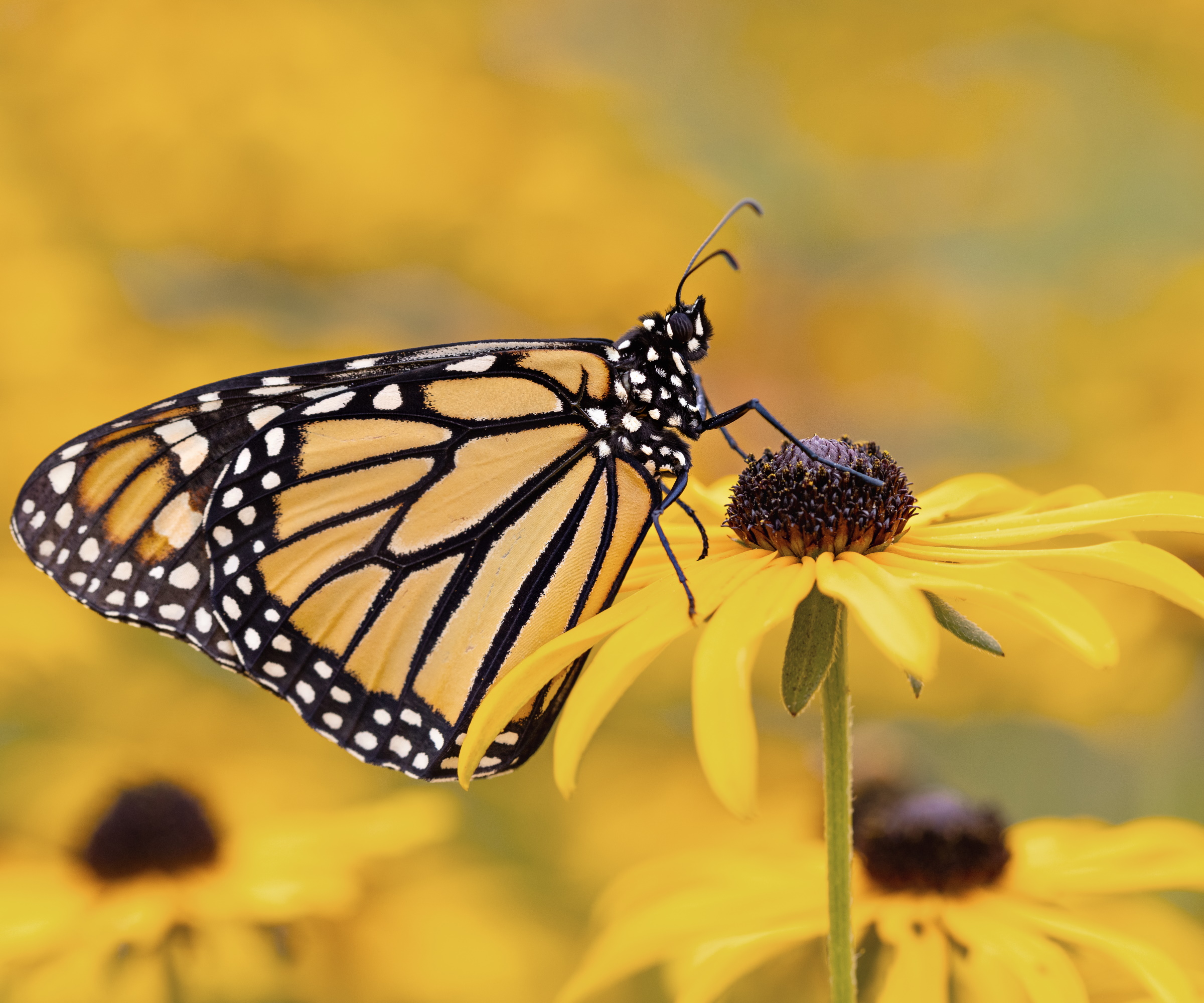
If you're looking to create bright containers that will attract butterflies to your backyard, then you should learn how to grow rudbeckia. These sunny flowers are loved for their bright yellow color and black center, giving them their common name 'black-eyed Susans.'
'The striking yellow flowers stand out all summer long, making them a favorite of butterflies,' says Jen McDonald from Garden Girls. 'It’s an easy-to-grow native that has been adapted to US hardiness zones 3 to zone 9. I really love the height on rudbeckia – I plant them in my vegetable gardens for interest and to bring in the pollinators,' she adds.
You might also choose to only cut back black-eyed Susans in early spring and leave the seed heads for birds to eat in fall and winter.
Discover rudbeckia plants online, like this black-eyed Susan plant from NatureHills.com
3. Dill
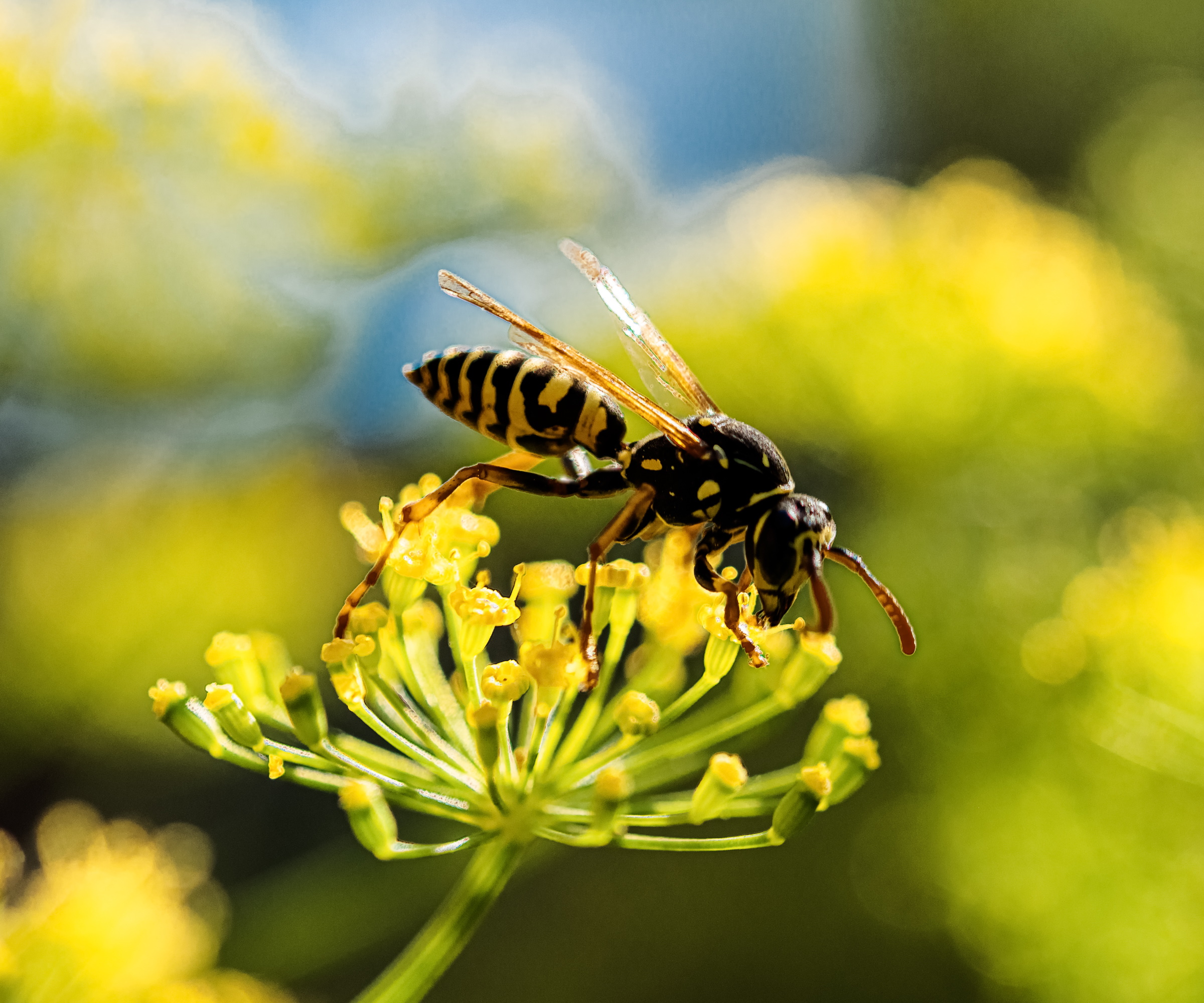
It's not all about ornamental plants, as many edible plants in your kitchen garden also produce flowers rich in nectar – plus, they often add fragrance to your pots.
From midsummer to fall, dill produces gorgeous yellow umbels that a wide range of pollinators love.
'Dill attracts black swallowtail caterpillars, bees and butterflies. It re-seeds easily and goes to flower rather quickly in the summer,' says Jen. 'Dill is a uniquely beautiful flowering herb that I think resembles a small firework display in the garden,' she adds.
Choosing to grow herbs in pots is great for the convenience of moving them around, but can also add fun texture and scent to your containers.
Dill is easy to grow and care for, thriving best in US hardiness zones 9 to 11. Place it in a nice sunny position and ensure it receives plenty of water during warmer weather. We explore how to grow dill in a separate piece.
Dill is widely available as a seed to grow at home, like this dill seed from Walmart.
4. Echinacea
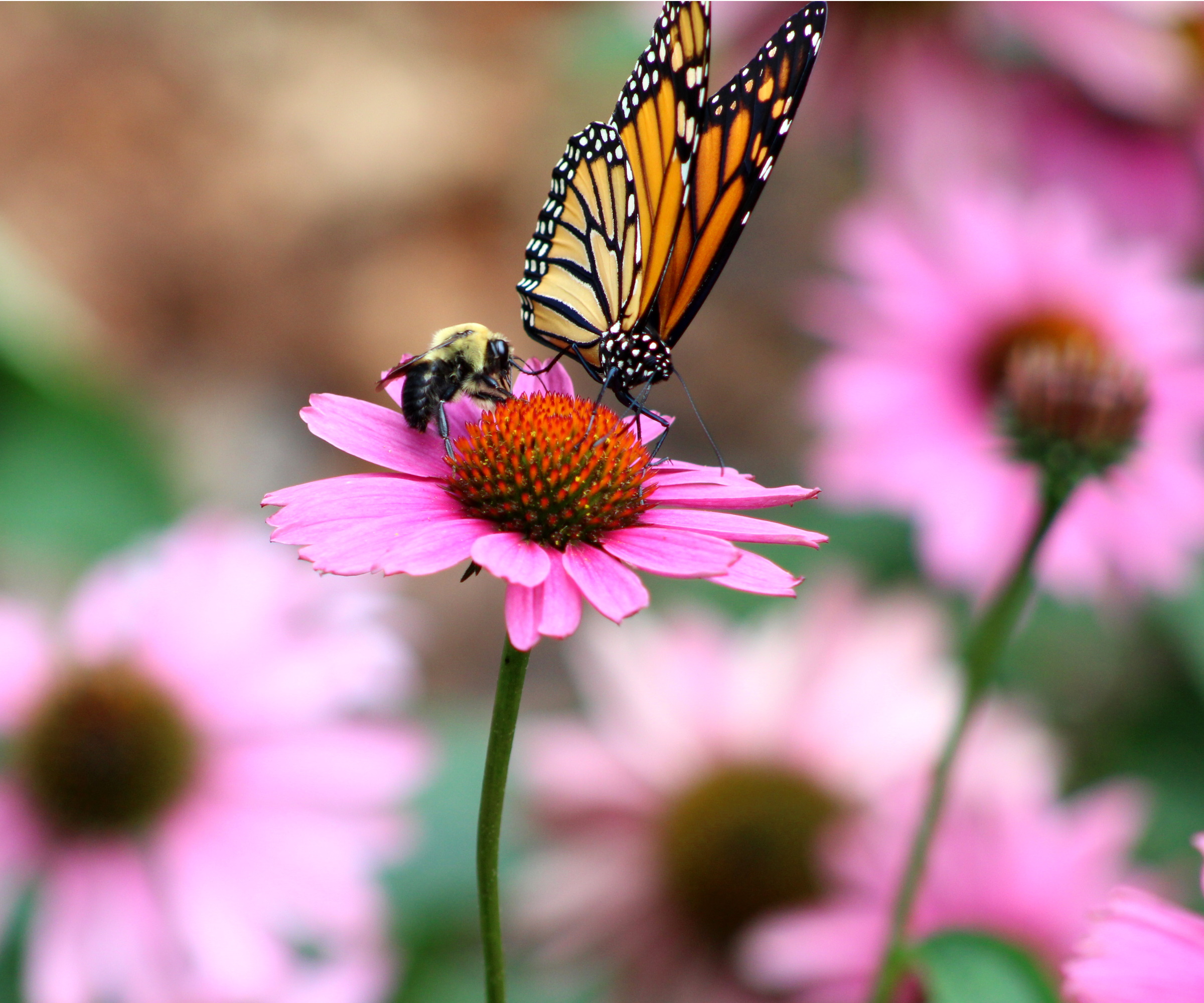
To add some versatility to your pollinator pots, add one of the best coneflower varieties. Also known as echinaceas, these classic pollinator flowers come in a range of colors and can be used for different planting styles.
'Echinaceas grow best in a very large pot to ensure its extensive root system has enough nutrients to take from. It is encouraged to only plant 3-4 seeds per pot and water very regularly,' says Sarah Warner. 'These native flowers love water and take it up quickly, which is why they are used in rain gardens,' she adds.
These flowers are valuable to pollinators because their center offers a large landing space, while their bright colors are a source of attraction. 'Echinacea has lots of great nectar and pollen, making it well worth the visit,' says Sarah.
Different varieties grow well in different US hardiness zones, from zone 4 to 9. It's best to do some research about your local climate before selecting one to grow in your pots.
Shop these flowers online, like these red echinacea flowers from NatureHills.com.
5. Geranium
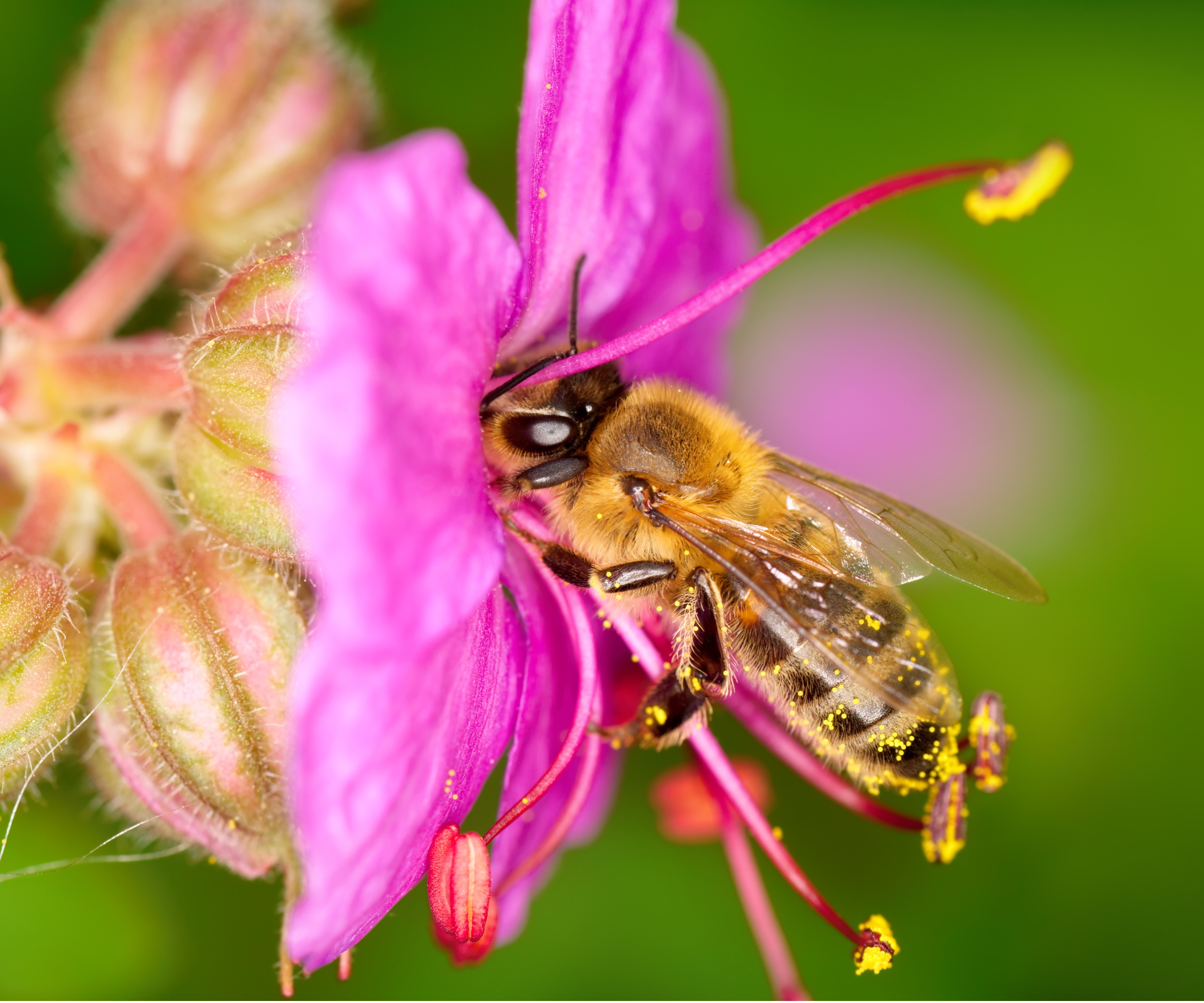
Another bright and compact flower perfect for pots is geranium. In fact, some geranium varieties can even be grown to trail making them perfect for hanging baskets and adding another level to your container display.
'Wild geranium is an important source of pollen and nectar for mason bees as well as other native bees because it flowers when females are provisioning their nests. Sweat bees, small carpenter bees and cuckoo bees visit the flowers to feed on the nectar as well,' says Sarah.
There are lots of hardy geranium varieties to choose from, growing best in US hardiness zones 3 to 9, so you can create a pollinator container that suits your garden aesthetic. Ensure to deadhead geraniums for returning blooms.
'Too much direct sunlight in summer might burn the delicate flower petals, so placing them in partial to full shade is best. They enjoy a well-draining soil that can remain somewhat moist,' says Sarah.
Shop for the perfect geraniums for your containers online, like these geraniums from NatureHills.com.
6. Cosmos
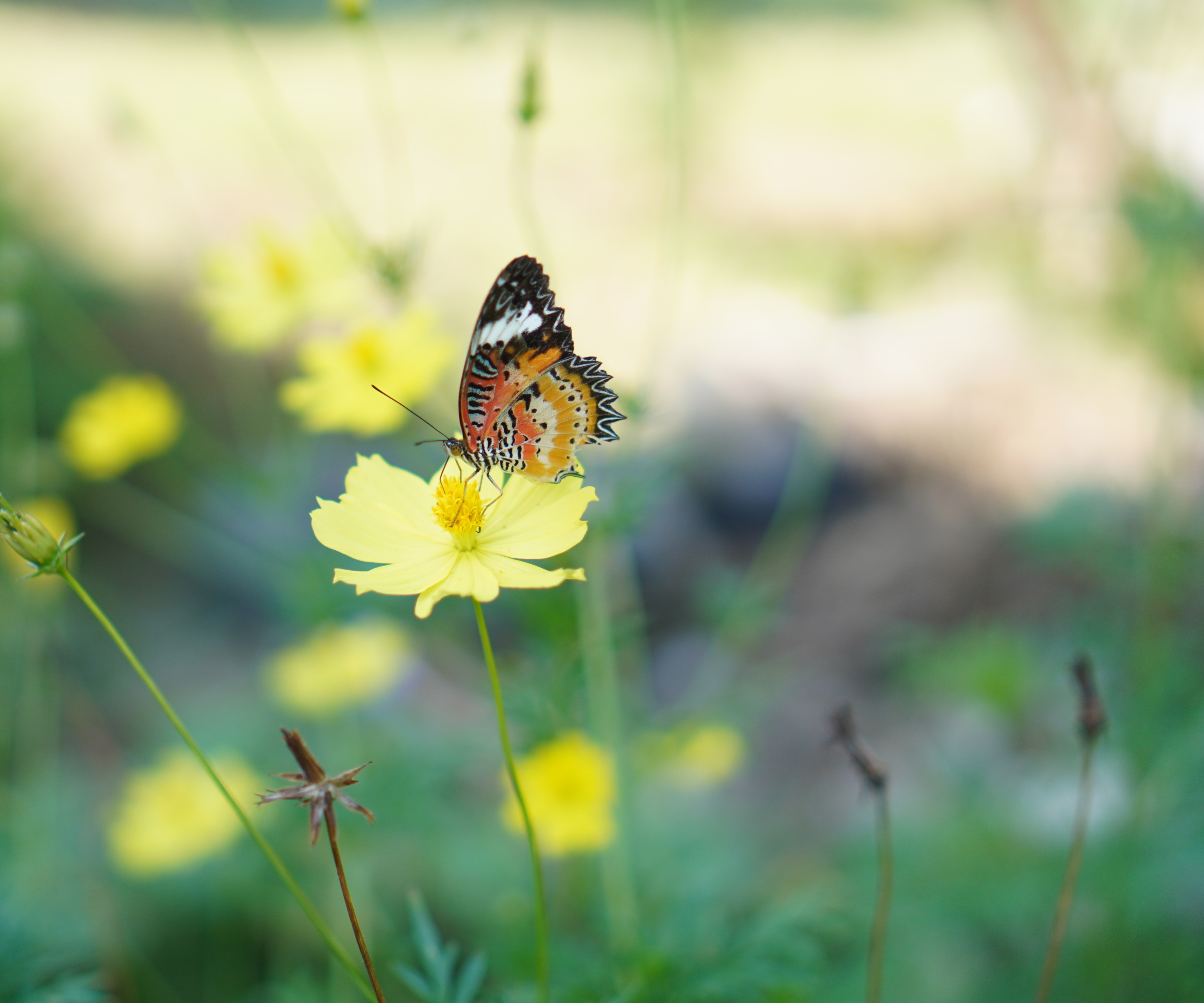
Learning how to grow cosmos is an excellent choice for producing flowers that will provide bright pops of color all summer. They come in a range of colors, from paler pinks to vibrant yellows.
'Cosmos attract bees and butterflies because of their tall stems and open flowering shape. Native bees enjoy them for their pollen and nectar and birds enjoy the seed heads once flowering is finished,' says Jen. 'I love to grow these in a container because of their height, wispy flowers and vase life,' she adds.
These flowers are good to consider if you're planning a cut flower garden, so that you can enjoy them both outdoors and indoors.
They grow easily from seed and thrive best in US hardiness zones 7 to 11. Make sure to do some research around when to plant cosmos seed for best results.
Find cosmos seeds online from a range of retails, including these cosmos seeds from Amazon.
7. Verbena
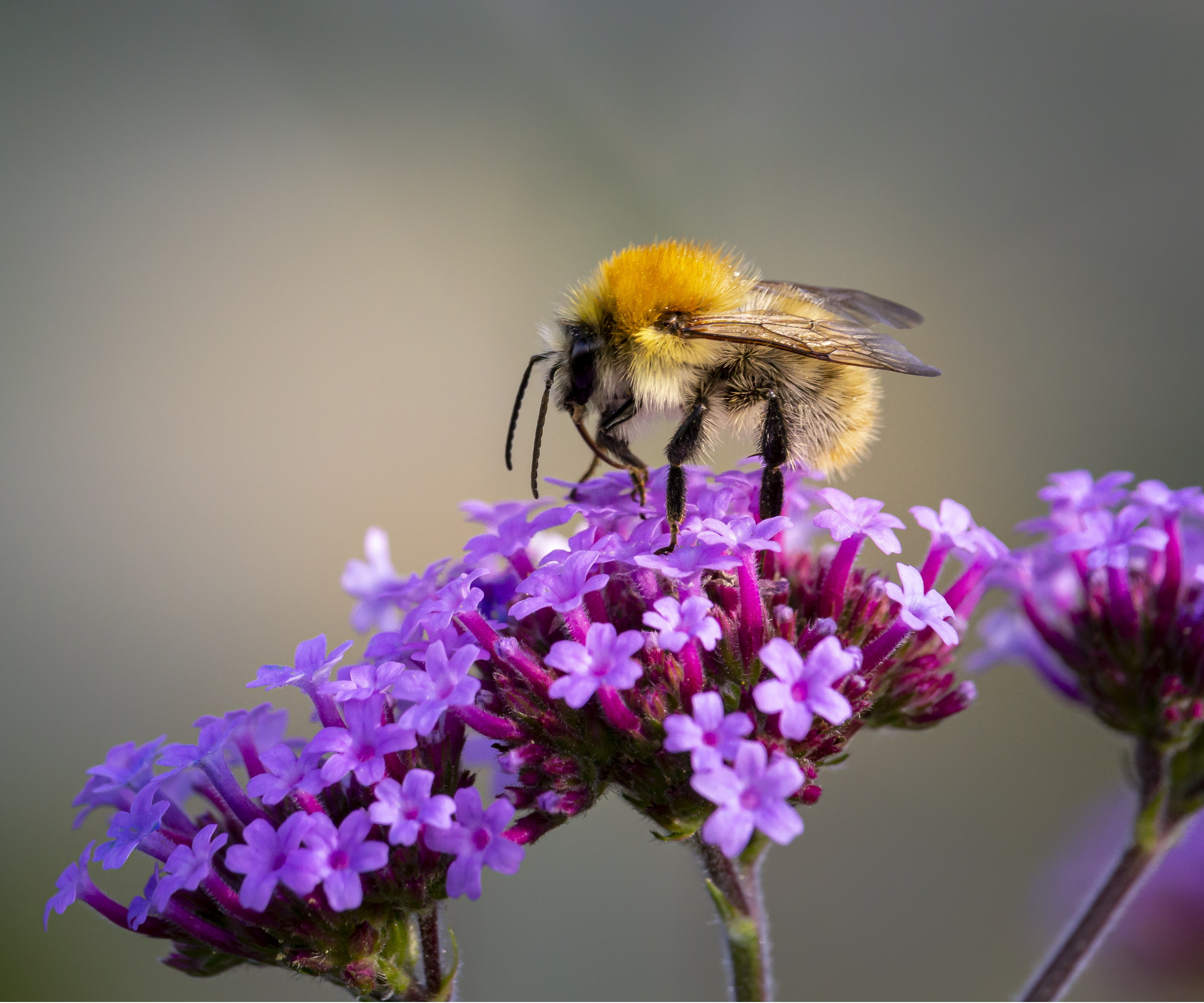
Last but certainly not least, verbena is a must-have in a container for pollinators. These bright umbel blooms flower from spring all through summer and it's incredibly easy to grow verbena from seed.
'Verbena is a hardy herb that can grow until the first frost, extending the opportunity for your pollinators,' says Donna Letier. 'Verbena grows easily in containers, but just remember that whatever type of container you choose, it needs to retain sufficient moisture while allowing excess water to drain,' she adds.
The flowers of verbena are bright and delicious as many people incorporate these edible flowers into a range of dishes – making it a tasty source for pollinators and growers alike.
You can learn how to grow verbena in US hardiness zones 8 to 11 from seed, like with this verbena seed from Walmart.
Discover perfect pots online
This set of three handmade terracotta planters add a rustic feel to patios and container gardens.
These plastic, wicker-style raised bed planters are great for plants that need good water drainage.
FAQs
What are the best plants for pollinators in fall?
When you think of pollinator planting, you may automatically think of bright spring and summer blooms. It's also important to provide nectar sources for those pollinators who still visit in fall. Plants to have in your yard for fall pollinators include types of salvia, fuchsia and plumbago that are still flowering after summer.
Even if you have a small garden you can still provide plenty of nectar sources for pollinators. Create a bright and bountiful container garden for pollinators with these plants and you'll soon have lots of visitors to your yard.
If you want to add more to your yard and turn it into a wildlife garden, why not try making a bug hotel?







